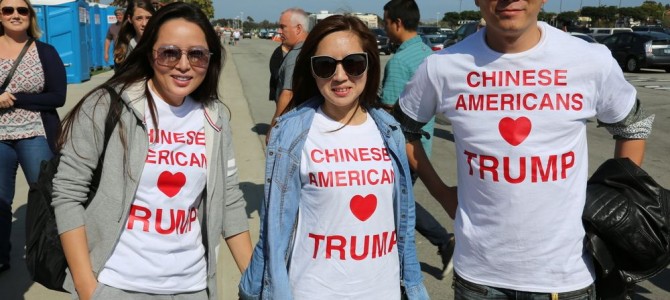
Party realignment is coming and, for conservatives, it’s going to be terrible.
Political scientists have divided American history into five periods based on the party system that prevailed at the time. Each period saw a stable system of two-party competition for decades, and each ended with a dramatic shift in effectual issues that destroyed or dramatically transformed one of the parties, giving rise (after some confusion) to a new stable party system.
The exact boundaries of the party systems have been hotly debated, but generally speaking, we can say that the current system (the fifth) arose in the late 1960s and early 1970s as the parties cast off the last of their Civil War loyalties and became grounded in ideology, with the Republicans growing more uniformly conservative and the Democrats becoming more uniformly progressive.
This is the system that prevailed, more or less, until today. Populist uprisings, from Trumpites in the Republican Party and Sandernistas in the Democratic, look to turn that system on its head, reshaping one or both of those parties and shifting the policy debates and election fights to yet-unknown issues and battlegrounds.
So, change is coming. A large segment of the American populace believes neither major party is adequately addressing the issues of illegal immigration and the problems of free trade. A third party movement is possible, but history tells us that when an unforeseen issue emerges that motivates enough voters, one of the major parties will adopt it as its own.
The Establishment Fights Like Hell
In the meantime, as we have seen, the party hierarchies will fight like hell to keep things the way they were. In 2016, the Democrats have proven more resistant to the populist surge, and look to nominate Hillary Clinton, a stalwart of the free-trading, quasi-capitalist wing of the Democratic Party her husband brought to prominence in 1992.
The Republicans have seen the opposite result. Although the result is not yet certain, nominating Donald Trump would represent a dramatic shift for a party heretofore dedicated to free trade, low taxes, and a small central government. Trump favors none of these things, and stands a decent chance of shifting his new party to one that also rejects them. Traditional Republicans may not be able to stop him, but many have sworn to oppose him, even if it means opposing the party to which they have belonged all of their lives.
Would-be party bolters of the Never Trump movement imagine their exit from the party will lead to nomination of a conservative candidate who, even if he or she could not win, could at least provide a reason for conservative Republicans to come out to vote and support the down-ballot candidates. They may not win the White House, but they could keep Congress in Republican hands.
Never-Trumpers (and I count myself among them) often draw analogies to the 1912 presidential election, when William Howard Taft and Theodore Roosevelt divided the Republican Party almost evenly between them. Roosevelt took 27 percent of the popular vote as the nominee of the new Progressive “Bull Moose” Party, and Taft took 23 percent with the nomination from the rump GOP, leading to a victory for Democrat Woodrow Wilson with 41 percent of the vote (Eugene Debs, a Socialist, took the additional 6 percent).
The divided electorate of 1912 also handed the House of Representatives to the Democrats, although they took 43 percent of the House vote nationwide. The Democrats lost 61 House seats in the 1914 midterm elections and lost their majority entirely in 1916 as the divided GOP reunited. Never-Trumpers imagine they can skip even this step and keep Congress by keeping the party united in their legislative endorsements. They are mistaken, both in their optimism and in their analogy. The anti-Trump faction resembles not Roosevelt’s Bull Moose Party, but the Gold Democratic Party of 1896 and their standard-bearer, John M. Palmer.
Remember John Palmer?
Never heard of Palmer or the Gold Democrats? You’re not the only one. But their departure from a rapidly changing party is much more analogous to the stance of Never-Trumpers than the 1912 schism is, and the results should be sobering to Republican bolters.
The Democratic Party began the 1890s with their principles little changed since the end of the Civil War: small government, a strong dollar, low tariffs, and isolationism. But that decade also saw the rise of populism similar to that of our own time in feeling, if not in issues. They wanted income taxes, direct election of senators, nationalization of the railroads, regulation of big business, and above all weakening the gold-backed currency to help farmers pay off the debts they owed Eastern bankers. Neither party’s establishment much warmed to these people’s demands, but their success in forming a third party ensured that one of the major parties would adopt their issues or risk being displaced.
The Democrats jumped first, and nominated William Jennings Bryan, a 36-year-old, two-term congressman and orator from Nebraska. The third-party Populists also nominated him, effectively uniting the parties. Bryan’s speeches electrified Western crowds, but disturbed Eastern party leaders, much as Trump’s anti-immigrant, anti-trade speeches have. They bolted, and formed a party of old-style Democrats to oppose the upstart who had seized the reins of power.
After Grover Cleveland declined their offer, the Gold Democrats turned to Palmer. Palmer, a 79-year-old Civil War general, represented the old-time values of post-war Democrats: a strong dollar, low taxes, and opposition to business regulation. Palmer fought for traditional Democrats who resisted populism but couldn’t stomach voting for a Republican. He was the perfect man for the job, and he went down to ignominious defeat.
Trump’s People Have No Party Attachment
Palmer faced the same challenge that any independent anti-Trump Republican would: leading a rebellion made up of the least rebellious people to be found—party regulars. The Populist Party got off the ground like Trump’s movement did, by energizing voters who felt abandoned by the big parties. Those voters were happy to join a third party in 1892, and happy to join the Democratic Party in 1896. If the Republicans had nominated a populist that year, they may well have joined that party instead. Like Trumpites, they had no attachment to a party and no qualms about remaking one to suit their needs.
Compare that insurgency with the party stalwarts that Palmer, and some hypothetical Never-Trumper, would have to rally. The party establishment, however you choose to define it, is not rebellious. They have a long-standing attachment to one party. They have not accumulated years of grievances against Washington big shots. Indeed, many of them are Washington big shots, or prosperous professionals, or big donors. They may not love the nominee, but their first impulse is not to bolt the party. It is to go along.
Maybe the Democratic hierarchy thought Bryan would be less populist than his barnstorming speeches indicated. Maybe they thought he would lose anyway, and they should just keep their heads down and plan for the next election. Whatever the case, they stuck by their firebrand nominee. Bryan did go down to defeat against Republican William McKinley, losing the popular vote 51 percent to 47 percent. Palmer finished with just under 1 percent of the vote.
There are plenty of names being floated for a Never-Trump standard-bearer. Ben Sasse! Greg Abbott! James Mattis! These are all fine men who would likely make for better presidents than Clinton or Trump. But they would all face the same challenges Palmer faced in 1896. Rebels rebel; power-brokers cut deals.
Principled Defeat Versus Compromised Victory
We have already seen the process beginning with former opponents like Chris Christie and Mike Huckabee flocking to the standard of a man whose political ideas they once mocked. They were the first, but they will not be the last. Pundits (like me) may prefer glorious, principled defeat to victory that requires moral compromise. But, as Tuesday’s “Acela primary” shows, many party members are joining the victorious opposition. Trump may still be stopped, but if he wins the nomination, we should not expect a mass exodus from the Grand Old Party.
Bryan’s triumph at the 1896 Democratic Convention was not a clean break with the past, and a Trump nomination may not be either. Conservatives and populists continued their fight for the soul of the Democratic Party for decades, nominating populists (1900, 1908), progressives (1912, 1916, 1928), and conservatives (1904, 1920, 1924) before finally settling on the big government policies of Franklin Roosevelt that have defined their party since 1932.
Trump’s nomination may not define the Republican Party for a generation, but his voters are going to go somewhere. The overdue party realignment is coming, and it will remake at least one major party, if not both. Traditional Republicans may hope that their party returns to its conservative values, and that wish may be fulfilled in time. But whatever happens, they should not get their hopes up for a third-party savior. John Palmer’s quixotic run shows us how an anti-Trump candidacy is likely to end: in overwhelming, but honorable, defeat.








